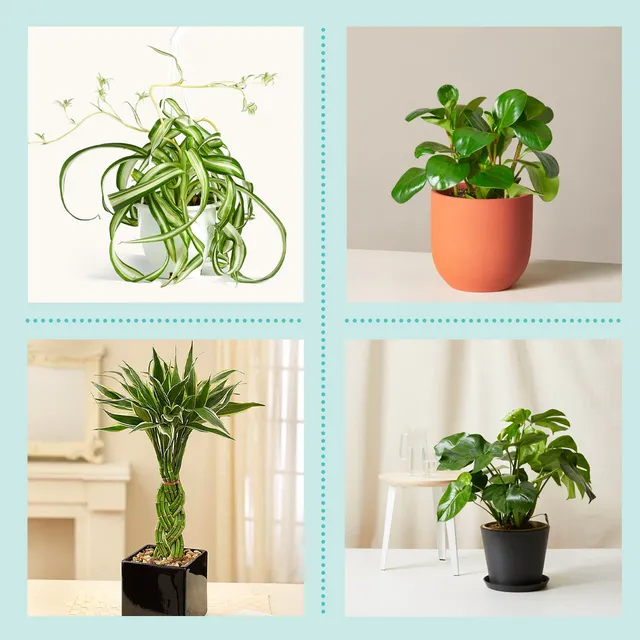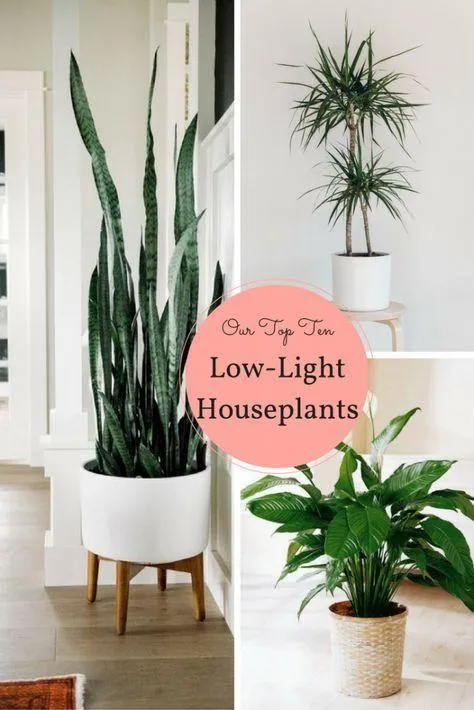Plants That Thrive Without Sunlight: A Complete Guide
If you love keeping houseplants but don’t have an area with abundant sunlight, you may be wondering what types of plants you can grow. Fear not – there are many beautiful options for plants that don’t need direct sun. In this article, I’ll cover over a dozen different plants suited for low-light conditions and reveal all you need to know to care for them. By the end, you’ll have the knowledge to start your own little indoor jungle without sunlight.
Common Houseplants for Low Light
- Pothos – One of the hardiest and easiest plants to care for. “Pothos is basically the king of low light,” says indoor plant expert Coral Ryan. Its trailing vines look lovely dangling from shelves or hanging baskets. Water when the soil is dry.
- Spider plant – With its long green leaves and clusters of small white flowers, spider plant is quite attractive for its carefree nature. Propagate it by separating baby plantlets from the mother plant. Water weekly.
- Philodendron – There are many varieties of philodendron to choose from. Look for heart-shaped leaves of red, pink or green on vines. Known to survive quite gloomy conditions with infrequent watering.
- Chinese evergreen – Adds a touch of lush tropical flair with its variety of bright, patterned leaves. Keep soil slightly moist. Rotate plant every few weeks so new growth faces the light.
- Snake plant – Tall grass-like leaves edged with white or yellow stripes. “Snake plants are notoriously tough,” notes Ryan. “They can go months without water!” Great for true forgetful waterers.
Plants for Very Low Light
If your space gets minimal light, these plants are specially adapted for the lowest light levels:
- ZZ plant – Stout stems topped with thick green leaves that have a waxy coating. Extremely drought tolerant once established. “ZZ plants sort of thrive on neglect,” jokes Ryan.
- Peace lily – Its white blooms and broad foliage add grace. Produces flowers only in very bright light, but leaf growth persists in dim conditions. Leaves droop when thirsty so it signals clearly when to water.
- Cast iron plant – Durable gray-green leaves shaped like bamboo on sturdy stems. From my experience, this plant can handle very dark corners and infrequent watering with ease.
- Ponytail palm – Sculptural fan-shaped leaves resemble a bushy ponytail. Slow growing and drought tolerant. Attractive even without flowers or new growth.
- Janet Craig dracaena – Soft leaves in shades of green, yellow or red radiating from a central stem. Withstands the lowest light and infrequent watering with no problems.
Plants for No Light Conditions
Some species are so specialized that they can subsist for long periods without any light whatsoever:

- Air plant (Tillandsia) – Needs only a weekly water soak to flourish. Display them floating in a vase, tucked among books or dangling from the ceiling. Amazingly they photosynthesize even without soil!
- Resurrection plant (Selaginella lepidophylla) – Curls into a brown crunchy ball when dry but “resurrects” when watered, unfolding green tendrils. Fun to watch its transformation! Keep barely moist.
- Liverworts – Tiny feather-like plants that grow as carpets or patches on damp surfaces even in total darkness. Low maintenance – just mist regularly and keep humid.
While flowering may be limited in deep shade, these sun-shunning plants offer delightful greenery that thrives without sunlight. With some experimentation, there’s surely an option perfect for the lowest-light nook in your home.
Tips for Growing Low-Light Plants
While the above species tolerate low light, maximizing their growth still requires attention to a few basics:
- Bright indirect light is best – Near an east-facing window where morning sun filters through, or several feet from a south or west window.
- Rotate monthly – Turning plants nudges new growth outwards so all leaves receive some light exposure.
- Supplement with grow lights – If space gets only a few hours of light, adding a fixture with basic LED bulbs above plants boosts growth significantly.
- Adjust watering – In very low light, soils dry out slower so water less often. Check by sticking a finger an inch down.
- Use fertilizer in spring and summer – A diluted liquid houseplant food every few weeks provides nutrients as growth slows without sun.
- Prune faded growth – This encourages bushier forms by directing energy into new leaves rather than spoiled old ones.
With these low-maintenance strategies, your collection of shade-loving plants will thrive even without strong natural sunlight. Their lush greenery is sure to brighten even the dimmest nooks of your home.

Common Pests and Problems
As with any indoor plants, low-light varieties can occasionally face pest or disease issues. Here are some of the most typical challenges and what to do:
- Mealybugs – Tiny soft-bodied pests that suck plant juices. Wipe leaves with rubbing alcohol or use an insecticide spray safe for indoor use. Isolate infested plants.
- Spider mites – Tiny spiders visible as webs or stippling on leaves. Mist leaves regularly to increase humidity levels, which mites dislike. Neem oil spray controls infestations.
- Fungus gnats – Fly around soil and lay eggs; larvae feed on roots. Allow top soil layer to dry between waterings. Place sticky traps near plants to monitor numbers.
- Root rot – From overwatered soils that become soggy and lead to breakdown of roots. Use well-draining potting mixes and check moisture levels before watering.
- Yellow or brown leaf spots – Often a fungal or bacterial infection. Remove affected leaves and improve air circulation. Consider a fungicide as a preventative in really humid conditions.
By observing plants closely for signs of change and addressing issues promptly, you can usually keep pests and diseases under control without much trouble. Enjoy your thriving oasis of non-sun dependent plants for many trouble-free years to come!
“Plants that don’t require sunlight”
| Plant | Light Requirement | Watering Needs | Soil | Height |
|---|---|---|---|---|
| ZZ Plant | Low light | Let dry slightly between waterings | Well-draining | 2-4 feet |
| Snake Plant | Low light | Let dry out between waterings | Well-draining | 2-3 feet |
| Pothos | Low light | Let dry out between waterings | Well-draining | Trailing vine |
| Spider Plant | Low light | Let dry slightly between waterings | Well-draining | 12-24 inches |
| Peace Lily | Medium light | Let dry out slightly between waterings | Well-draining | 12-24 inches |
FAQ
-
What types of plants thrive without direct sunlight?
Plants like peace lilies, spider plants, and Chinese evergreens basically do well in shady spots. They are sometimes called “shade lovers” since they grow happily without a lot of light.

-
How can plants survive in the dark?
Plants that grow underground in complete darkness, like potatoes and ginger, tap into nutrients and water from the soil. They store up energy from whatever sunlight hits their leaves above ground. So at times plants can survive without light, as long as their other needs are met.
-
Do any flowers grow in the shade?
Surprisingly, some flowers bloom beautifully with low light, such as impatiens, begonias, and African violets. They seem to kind of glow even without direct sunbeams. Gardeners love these shade-tolerant blooms for adding color underneath trees.
-
What houseplants don’t need much sunlight?
As well as peace lilies and spider plants, the pothos plant appears to thrive on very little light. It trails aesthetically from pots and baskets. The philodendron and zig zag plant also reportedly do well in dim indoor spots, basically as long as they get indirect glow.

-
Do mushrooms grow in the dark?
Mushrooms are kind of amazing – they can sprout underground or inside Logs and tree trunks without any light at all. Mycologists have found mushroom farms flourishing deep in caves. They get nutrients through web-like underground tunnels called mycelium. So yeah, some fungi defiantly grow happily in the dark.
-
Can plants grow with artificial light only?
Many indoor plants withstand lacking natural sun, since grow lights attempt to mimic the sun’s rays. LED and fluorescent bulbs work to varying extents. Some studies show plants thrive equally under grow lamps versus daylight, if given the right spectrum and duration. Nevertheless, nothing may replace real sunshine outside for optimal plant well-being in the long run.
In summary, whilst most green things need light overall to photosynthesize, certain plant species have evolved to tolerate very low or indirect light. From shade-loving greenery to underground tubers, there’s a diverse range that survives without much sun exposure. Whether drawn indoors or living deep in forests, their endurance in dim niches is almost stunning!
